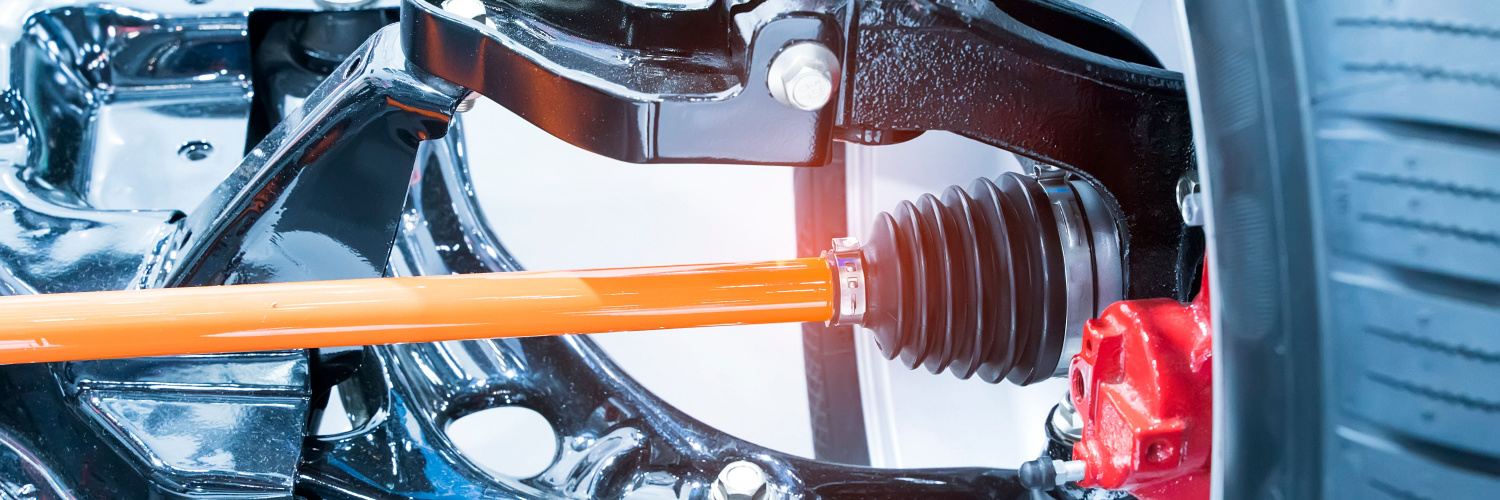Steering & Suspension in Grassland, AB
The Importance of Steering and Suspension

A vehicle’s steering system is an essential component of its ability to move. The steering system’s primary functions are to provide vehicle turning at the driver’s command, directional stability, convert the steering wheel’s rotary movement into an angular turn of the front wheels, and absorb road shock from being transmitted to the driver’s hands.
In this article, you will learn about the Steering and suspension system.
What are steering and suspension?
Steering system
Your car’s steering system includes everything from the steering wheel to the steering shaft, rack and pinion (also known as the gearbox), and the linkage that connects to the wheels.
Suspension system
A suspension system comprises mechanical components such as springs and dampers that connect the wheels to the chassis. Traditionally, it has served two purposes: managing the vehicle’s handling and braking for safety and keeping passengers comfortable from bumps, vibrations, and other factors.
It is a mechanical system of springs or shock absorbers that connects the wheels and axles of a wheeled vehicle to the chassis.
Your vehicle’s suspension system is responsible for smoothing out the ride and keeping the vehicle in control. The suspension system increases the friction between the tires and the road, offering steering stability and good handling.
Basic Components of Steering and suspension systems
Steering system
- Steering wheel
- Steering column or shaft.
- Steering gear
- Drop arm or pitman arm
- Ball joints
- Drag link
- Steering arm
- Stub axle
- Left spindle and kingpin
- Left tie rod arm
- Track rod or tie-rod
- Right tie rod arm, spindle, and kingpin
Suspension system
- Springs
- Shocks
- Wheels
- Rods
- Joints, bearing, and bushing
Different types of the steering system
There are different types of the steering system, as follows:
Rack and Pinion steering
A rack-and-pinion steering system is most likely used in your average car or truck. The rack, a horizontal piece of metal with teeth along the top side, and the pinion gear, a round gear at the end of the steering shaft that interlocks with the rack’s teeth, comprise this simple system. This mechanical system is typically housed within a tube.
The steering shaft and pinion gear turn with you as you turn the steering wheel.
Recirculating ball steering
Power steering components can be combined with the recirculating ball system to improve steering assistance. This works similarly to the power-assisted rack-and-pinion system in that pressurized power steering fluid is applied to a specific block side to ease steering in that direction.
Electric steering
Electric power steering systems are the most eco-friendly and fuel-efficient steering systems available, with an electric motor replacing the traditional power steering pump. This electric motor is directly attached to the rack-and-pinion assembly or the steering shaft.
An internal computer senses which direction the driver wants to turn and powers the motor to assist in that direction using a variety of sensors. Since the power steering pump has been replaced, power steering is available without additional engine horsepower as in standard power steering systems.
How do the steering and suspension systems work?
Before we get into the issues, your car may be experiencing with steering and suspension, it’s important to understand how they work.
Vehicles are equipped with either reciprocating ball steering or rack and pinion steering.
Reciprocating ball steering uses links and arms to ensure all four wheels turn simultaneously. It employs a steering box to control the movement of the steering wheel and column and connects it to the wheel movement capabilities.
The steering wheel and steering column are linked to a rack, which moves a piston as the wheels turn.
The suspension system connects your car’s body to the wheels via shocks. The suspension system keeps your wheels connected to the road and provides a smooth ride while driving. The suspension system includes several components that absorb the impact of the road as you drive, such as springs, shocks, and struts.
How do you know if your steering suspension is bad?
- Difficulty when turning the wheel
- Vibration in the steering wheel
- Looseness in the steering wheel
- A car pulls on one side
Get in Touch with Gustafson Auto Clinic & get full treatment!
If you are wondering about the best-quality & satisfactory Steering and Suspension system, your search ends at Gustafson Auto Clinic.

